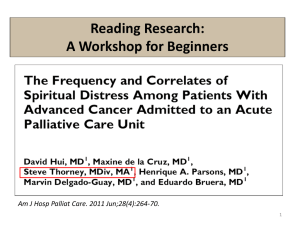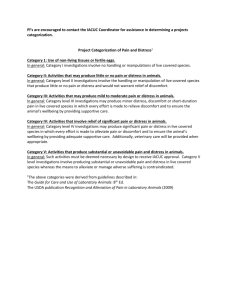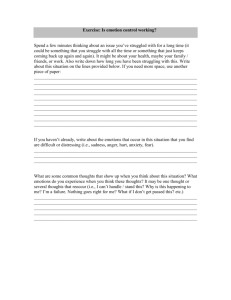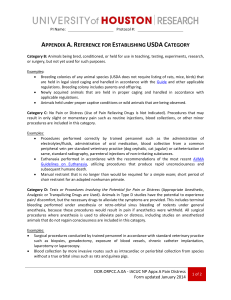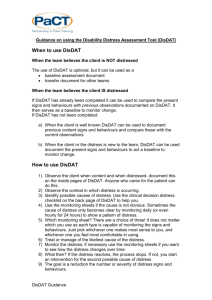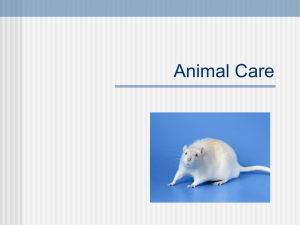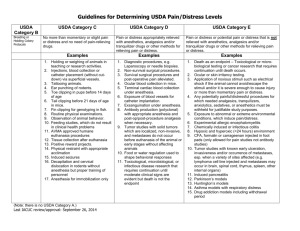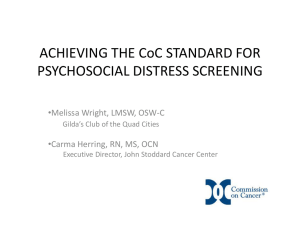Support for a Distressed Colleague ()
advertisement
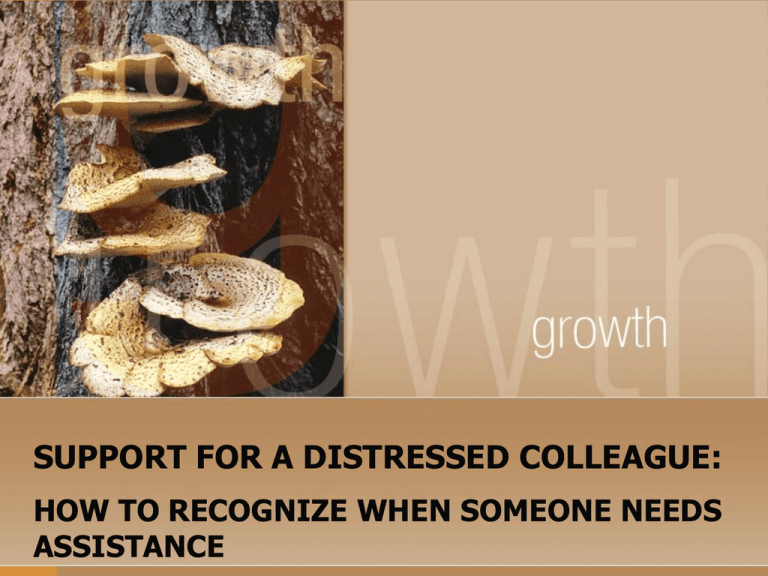
SUPPORT FOR A DISTRESSED COLLEAGUE: HOW TO RECOGNIZE WHEN SOMEONE NEEDS ASSISTANCE OBJECTIVES Review Identify signs and symptoms of distress strategies to help those in need Familiarize self with community resources for distressed individuals 4/13/2015 2 SIGNS AND SYMPTOMS OF DISTRESS Everyone experiences distress from time to time In many cases, signs and symptoms of distress are short lived and our colleagues or friends get better At other times, signs and symptoms of distress are enduring In these cases, our colleagues or friends need assistance 4/13/2015 3 ICE BREAKER Identify a situation in which you experienced a colleague or friend in distress What signs and symptoms of distress were present for the person in need of assistance? What course of action was taken to resolve the problem? 4/13/2015 4 SIGNS AND SYMPTOMS OF DISTRESS Marked decrease in work performance including attendance Complaining of sadness or crying more often Being irritable on most days or having anger outbursts Losing interest or pleasure in most activities Avoiding friends, activities and social events Escaping by daydreaming or sleeping often Difficulty in falling or staying asleep 4/13/2015 5 SIGNS AND SYMPTOMS OF DISTRESS Feeling fatigued or exhausted Eating much more or less than normal or having other changes in appetite Worrying or being unable to think about anything but the problem Expressing feelings of hopelessness and helplessness Conveying feelings of worthlessness Increased use of alcohol and or drugs 4/13/2015 6 SIGNS AND SYMPTOMS OF DISTRESS Extreme behavior change Euphoria or manic behavior Increased social isolation Disorientation Thinking or talking about death or dying 4/13/2015 7 SIGNS AND SYMPTOMS OF DISTRESS More serious signs include… Experiencing severe depression and hopelessness Making verbal or written threats to harm self or others Preparing for death (giving away prized possessions or saying goodbye) Exhibiting self-injurious or self destructive behaviors Having a past history of suicidal threats or attempts 4/13/2015 8 STRATEGIES TO HELP THOSE IN NEED Hear (listen) – take time to listen to what your colleague or friend is saying Empathize – acknowledge what you have heard. Express concern and interest. Reflect feelings and summarize your colleague’s or friend’s concern. Avoid criticizing or judging the distressed individual's concerns. 4/13/2015 9 STRATEGIES TO HELP THOSE IN NEED Assess – ask questions such as: What have you thought about doing to resolve the problem? What are your options in this situation? What are the pros and cons of different proposed courses of action? Refer – Encourage your colleague or friend to seek professional assistance to help with problem resolution. Offer to help the individual find the help they need. 4/13/2015 10 STRATEGIES TO HELP THOSE IN NEED Take Action – Do not ignore the signs of someone in distress. In cases where the signs are very serious such as expressions of intent to harm self or others, seek professional assistance right away. Note: Consult with a supervisor or administrator when there are concerns about a colleague. 4/13/2015 11 COMMUNITY RESOURCES University Employee Assistance Program – 882-6701 Police – Emergency – 911 National Suicide Prevention Lifeline – 800-273-TALK WebMD - http://www.webmd.com/ National Institute of Mental Health http://www.nimh.nih.gov/ 4/13/2015 12 COMMUNITY RESOURCES Missouri Domestic Violence Resources http://www.lsmo.org/Home/PublicWeb/Library/Doc uments/1091632985.39/doc_Shelters.htm Community Mental Health Centers in Missouri http://www.mocmhc.org/ Missouri Area Agencies on Aging http://www.dhss.mo.gov/AAA/index.html 4/13/2015 13 DISCUSSION Questions Evaluation Wrap-Up 4/13/2015 14


